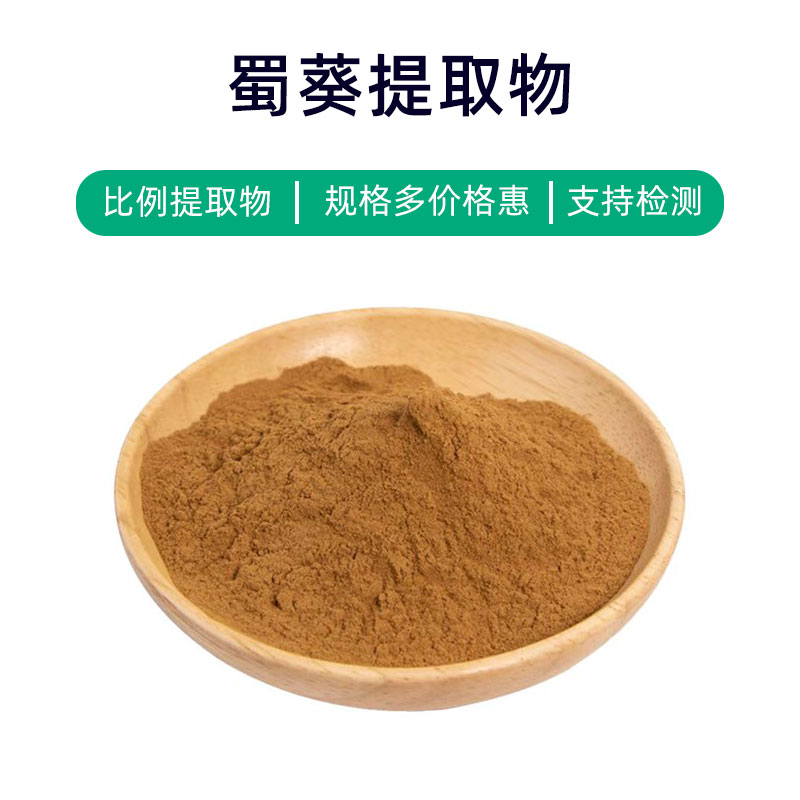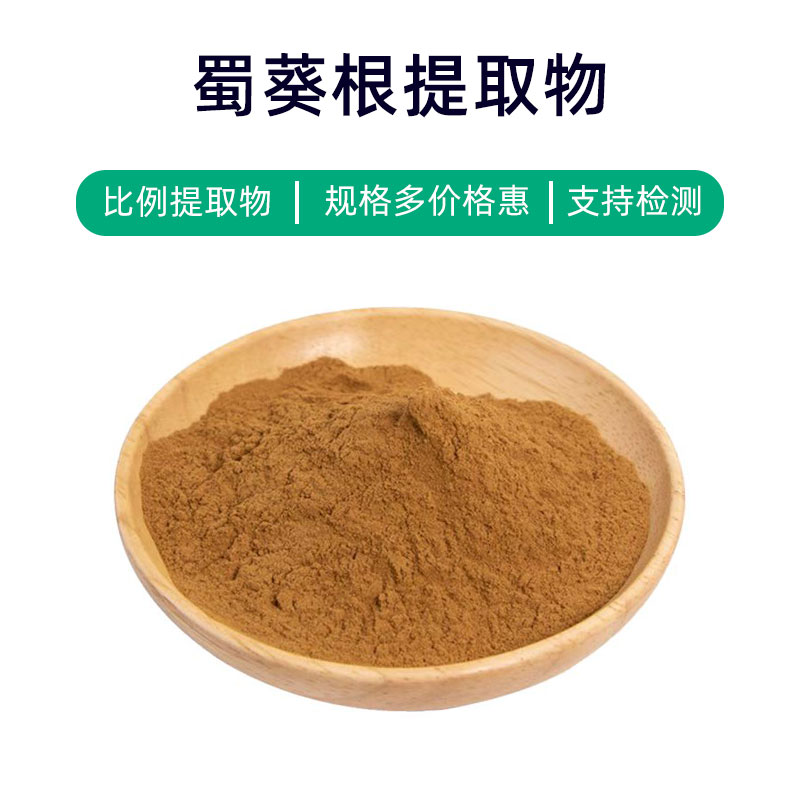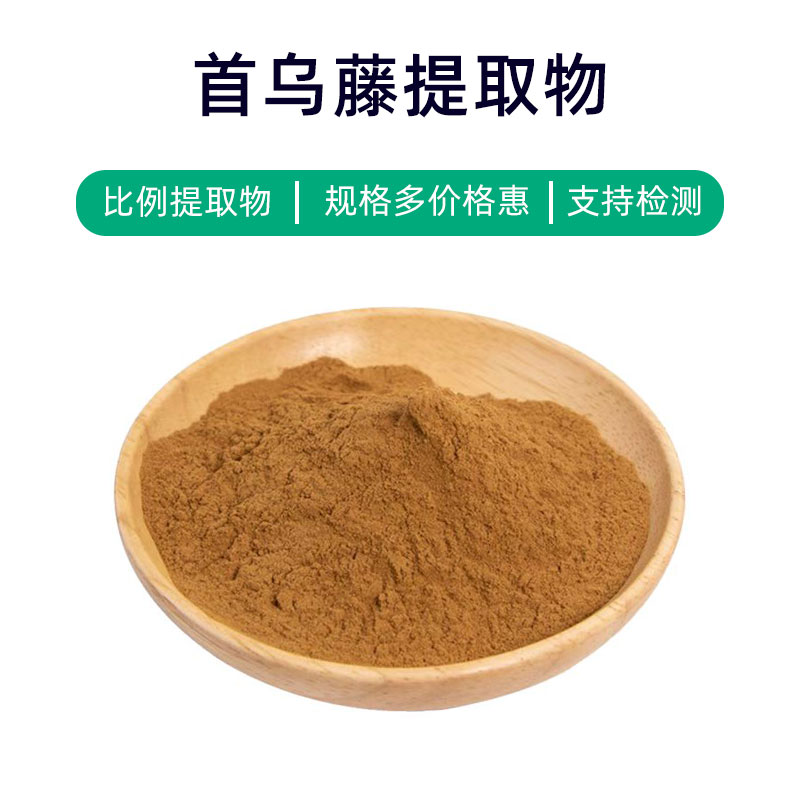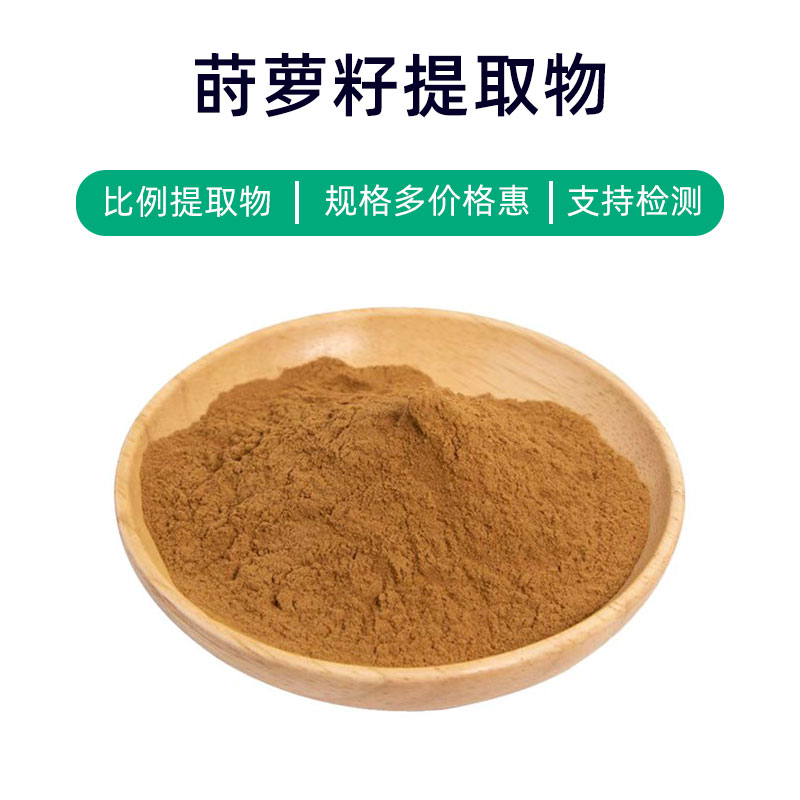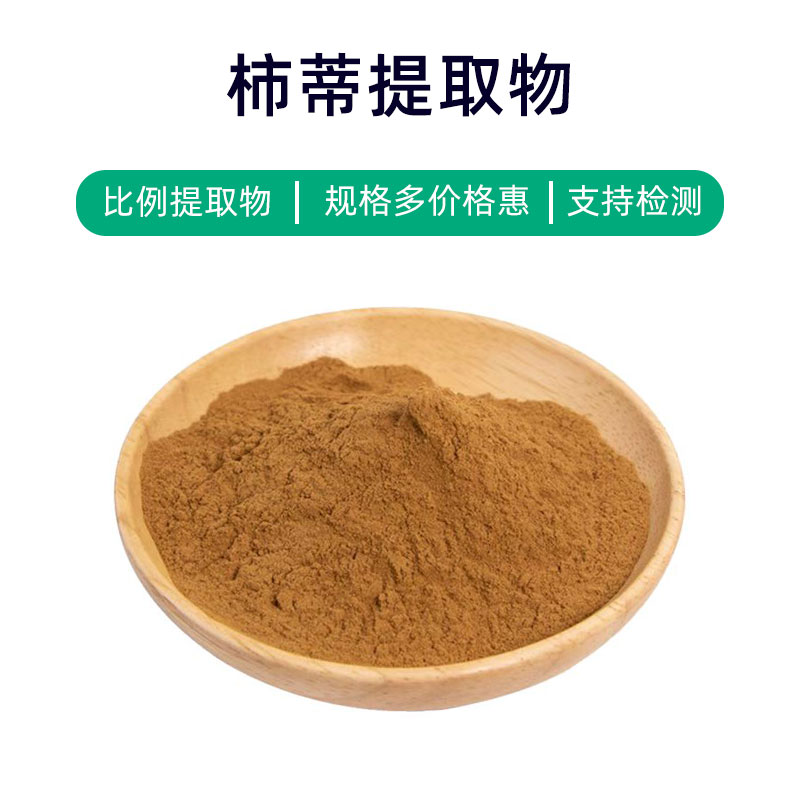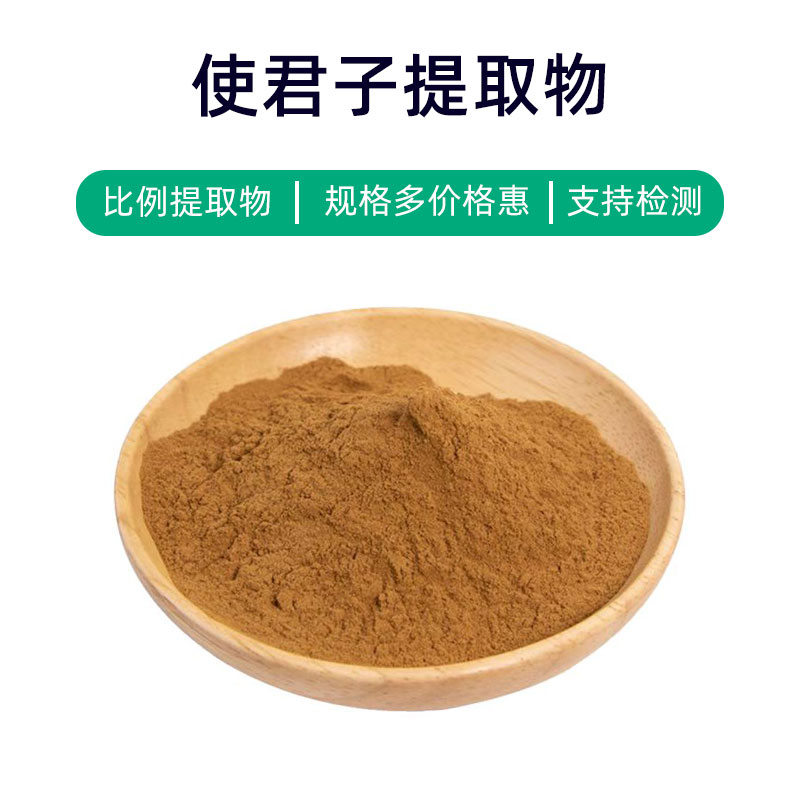Green Vine Extract Product Overview
Green Vine Extract is a natural plant extract obtained from the roots, stems, and leaves of the Green Vine plant. Its main components include flavonoids and polysaccharides. These components give Green Vine Extract various biological activities, such as antioxidant, anti-inflammatory, and antibacterial effects.
In the field of medicine, Green Vine Extract is widely used to treat inflammatory diseases such as rheumatoid arthritis and osteoarthritis. Its anti-inflammatory properties help relieve joint pain and swelling, improving patients' quality of life. Additionally, Green Vine Extract is used to treat skin inflammation and allergic reactions, providing some skin protection.
In the health supplement sector, Green Vine Extract is often used as a natural health supplement to boost immunity, improve antioxidant capacity, and regulate blood lipid and glucose levels. Its antioxidant effects help delay aging and protect cardiovascular health.
Furthermore, Green Vine Extract is commonly used in the cosmetics industry. Its anti-inflammatory and antioxidant properties make it a popular ingredient in skincare products, suitable for soothing sensitive skin, reducing redness and inflammation, and maintaining skin health and youthfulness.
Overall, as a natural plant extract, Green Vine Extract contains multiple bioactive components that play an important role in medicine, health supplements, and cosmetics, supporting both health and beauty.
Green Vine Extract Production Process
The production process for Green Vine Extract mainly includes the following steps:
- Raw Material Collection and Preparation: Fresh Green Vine plants, including their roots, stems, and leaves, are collected to ensure freshness and quality. After collection, the raw materials undergo preliminary cleaning and treatment to remove impurities and surface dirt.
- Extraction Process: The cleaned Green Vine plant material is crushed or cut to enhance extraction efficiency. Then an appropriate solvent (such as ethanol or water) is used to extract the plant, allowing the active ingredients to dissolve fully in the solvent. Traditional methods like maceration, soaking, and repeated extraction can be used.
- Filtering and Concentration: After a designated extraction period, filtering equipment is used to separate the extract from solid materials. The extract is then concentrated to remove most of the solvent, resulting in a concentrated liquid extract.
- Refining and Purification: The concentrated extract undergoes further refining and purification. Techniques like thin-layer chromatography or gel column chromatography are used to separate and purify the target components, removing impurities and enhancing product purity.
- Drying and Granulation: The purified extract is dried to eliminate remaining moisture, resulting in a dry extract. This can then be granulated into suitable particle or powder forms.
- Quality Inspection and Packaging: The final product undergoes quality checks, including appearance, component content, and microbial limits. Once passed, the product is packaged in sealed containers to prevent moisture and light exposure, ensuring product quality and stability.
- Storage and Preservation: The packaged products are stored in a dry, cool, well-ventilated area, avoiding direct sunlight and high temperatures. Regular inspections and monitoring are conducted to ensure product quality and safety.
Green Vine Extract Effects and Side Effects
Green Vine Extract is a commonly used herbal medicine with several key effects and benefits:
- Anti-Inflammatory Effects: Rich in bioactive components, Green Vine Extract exhibits significant anti-inflammatory properties, effectively suppressing the body's inflammatory responses and alleviating symptoms of inflammatory diseases.
- Pain Relief and Anti-Itch: The active components in Green Vine Extract have analgesic and anti-itch effects, relieving various types of pain and itching, including joint pain, muscle aches, and skin itching.
- Antioxidant Effects: Green Vine Extract is rich in natural antioxidants that help eliminate free radicals, protecting cells from oxidative damage, delaying aging, and promoting health.
- Immune Regulation: Green Vine Extract can modulate immune function, enhancing the body's immunity and increasing resistance to infections and diseases.
- Antibacterial and Antiviral: Green Vine Extract demonstrates certain antibacterial and antiviral properties, applicable in treating infections caused by bacteria and viruses, such as respiratory and skin infections.
- Liver Protection: Green Vine Extract protects the liver, improves liver function, and alleviates liver burden, preventing and treating liver diseases.
- Regulating Blood Sugar and Lipids: Some studies indicate that Green Vine Extract can reduce blood sugar and lipids, assisting in the treatment of diabetes and hyperlipidemia.
- Antitumor Properties: The active components in Green Vine Extract have certain antitumor activities, inhibiting the proliferation and metastasis of tumor cells and showing therapeutic effects against some tumors.
It’s important to note that Green Vine Extract is generally safe at appropriate doses, but long-term use at high doses may cause adverse reactions, such as digestive issues, headaches, or rashes. Therefore, it should be used under medical advice, particularly in special populations such as pregnant women, nursing mothers, and children.
Green Vine Extract Application Scenarios and Dosage
Green Vine Extract has various applications in medicine, food, and cosmetics. Below are its applications and dosages in different fields:
- Application in Medicine:
- Arthritis Treatment: Green Vine Extract can be used for treating arthritis and rheumatoid arthritis, often applied as an external ointment or massage oil, with a small amount gently massaged into the affected area 2-3 times daily.
- Skin Disease Treatment: Useful for treating eczema and skin itching, typically applied in the form of ointments, lotions, or sprays, applied to the problem areas 2-3 times daily until symptoms improve.
- Anti-Inflammatory and Pain Relief: For mild pain and fever, adult doses of Green Vine Extract liquid are 10-20 ml taken orally, three times a day, with adjustments for children.
- Application in Food:
- Health Supplements: Green Vine Extract can be used to produce joint health supplements and antioxidant supplements, common forms include capsules and tablets, with recommended adult doses of 1-2 times daily, 1-2 tablets each time.
- Functional Beverages: As an additive in functional drinks, it offers anti-inflammatory and pain-relieving properties, with a recommended dosage of no more than 50 mg per bottle.
- Application in Cosmetics:
- Soothing Skincare Products: With anti-inflammatory and antioxidant effects, Green Vine Extract is suitable for skincare products, used to soothe sensitive skin and alleviate discomfort, commonly found in creams and lotions.
- Anti-Aging Products: Rich in antioxidants, Green Vine Extract is used in anti-aging products to slow down skin aging and improve elasticity, recommended for daily use 1-2 times.
It is important to use Green Vine Extract’s dosage under the guidance of a healthcare professional, especially for special populations such as pregnant women, nursing mothers, and children. Additionally, those with allergies should perform a skin test before use, stopping immediately if any allergic reactions occur.
Green Vine Plant Source Introduction, Distribution, and Growth Environment
Green Vine (Scientific name: Strobilanthes cusia) is a common perennial herbaceous plant belonging to the Acanthaceae family. Below is a description of the plant's source, distribution, and growth environment:
- Plant Characteristics:
Green Vine typically grows to a height of about 1-2 meters, with elongated oval-shaped leaves that are deep green on the surface and slightly purple underneath. The leaves are glossy and have serrated edges. The inflorescence is a spike, with funnel-shaped flowers that are usually purple or bluish-purple. - Distribution:
Green Vine is primarily found in subtropical regions, including southern China, India, and Southeast Asia. In China, it is widely distributed in provinces south of the Yangtze River, such as Hunan, Guangdong, Guangxi, and Fujian, with particularly abundant growth in southern Hunan. - Growth Environment:
Green Vine thrives in warm, humid environments and is often found on hillsides, forest edges, gullies, and in fields. It is not very particular about soil type but grows best in fertile, loose loam and requires higher moisture levels, making it frequently found in humid areas. Green Vine prefers partial shade and is not tolerant of dryness or direct sunlight. - Reproductive Methods:
Green Vine primarily reproduces through seeds and vegetative division. Its seeds are small and hard with good resilience, sprouting rapidly under suitable environmental conditions. Additionally, Green Vine’s underground stems can grow to produce new roots and stems, expanding its coverage. - Ecological Characteristics:
Green Vine exhibits strong adaptability and vitality, growing rapidly under suitable environmental conditions, often forming dense thickets. It plays a significant ecological role in the ecosystem, contributing to soil stabilization, water source protection, and climate improvement. It is also an important medicinal plant with significant value in traditional Chinese medicine and folk remedies.
In summary, Green Vine is a common perennial herbaceous plant, primarily distributed in subtropical regions, preferring warm, humid environments with strong growth capability and adaptability. It is an important medicinal and ecological plant with minimal requirements for soil and climatic conditions.
Green Vine Extract Processing and Storage
The processing of Green Vine Extract typically involves several steps: First, fresh Green Vine plants are collected, cleaned, and preliminarily treated, followed by grinding and extraction. Common extraction methods include water extraction, ethanol extraction, or supercritical fluid extraction. The resulting extract undergoes concentration, filtration, and decolorization to yield Green Vine Extract. For storage, the extract should be kept in a cool, dry, well-ventilated environment, avoiding direct sunlight and high temperatures. To maintain its stability and activity, it is best to seal the extract in opaque containers and avoid contact with oxygen and moisture.
Monica Sun is a seasoned expert in the plant extraction industry with over a decade of experience in research and production. She specializes in the extraction and purification of plant active ingredients, focusing on driving innovation in natural product applications. Monica has participated in the development of multiple functional plant extracts, delivering high-value natural raw material solutions for the health food, pharmaceutical, and dietary supplement sectors.









